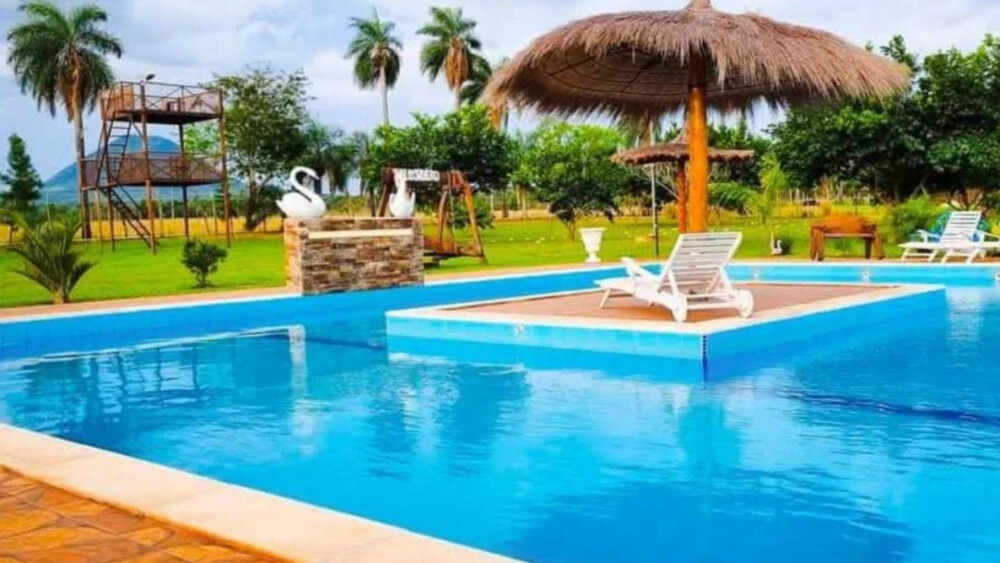
Holy Week in Paraguay is one of the peak seasons for domestic tourism, and this year is no exception, with rural tourist accommodations (Posadas Turísticas) experiencing a notable surge in bookings, averaging 70% occupancy. Vanessa Valverde, President of the Paraguayan Association of Rural Tourist Lodgings, stated, "Currently, our occupancy rate is around 70%, and some regions, like Misiones, famous for the Tañarandy event, are already fully booked."
She added that this year, the absence of the popular artist Koki Ruiz has further heightened interest among tourists seeking his cultural and religious legacy, thus emphasizing the significance of the Tañarandy region.
The Cordillera region is also experiencing high demand, attributed to the various events held during Holy Week, such as the major religious observances of the 'Seven Churches Pilgrimage' and 'Day of the Cross.' Areas like Altos offer rich cultural and spiritual experiences, while Valenzuela is not only famous for its traditional 'chipa apo' bread but also attracts tourists with its beautiful natural landscapes and diverse culinary scene.
Beyond religious purposes, many travelers are seeking nature-friendly experiences. Following this trend, the Itapúa region is gaining popularity by offering charming scenery and various activities along the Paraná River, as well as opportunities for religious experiences at the historic Jesuit mission ruins.
In the Alto Paraná region, commercial activity and ecotourism are harmoniously intertwined. Travel agencies and transportation companies are also offering package tours to visit the Chaco region communities. Although there are no rural tourist accommodations in this area, unique and rustic lodging experiences can be found in the Mennonite community towns of Filadelfia and Loma Plata.
President Valverde highlighted, "Our rural accommodations offer a complete rural experience, including cow milking, horseback riding, fishing, and adventure tours. For example, one lodging in the Ita region has a farm, fishing ponds, and even a zip line in the hills."
She also mentioned that many accommodations are reviving traditional customs that are gradually disappearing in urban areas, such as preparing the Last Supper using the 'tatakua' (earth oven) as part of their cultural experience programs. Valverde emphasized, "These experiences are no longer available in the city and contribute to emotional well-being by reconnecting with nature, ancestral customs, and traditions."
The price per night for rural accommodations ranges from 80,000 to 180,000 guaraníes, depending on the services offered. Some establishments feature jacuzzis, swimming pools, themed rooms, and even customized experiences tailored to each guest's preferences.
While regions like Atyrá and Encarnación still have vacancies, President Valverde advised that many bookings tend to be made at the last minute. Information regarding reservations can be found on the Paraguayan Association of Rural Tourist Lodgings' social media channels or by contacting the accommodation managers directly.
Key recommended programs include cheese tours, sugarcane tours, and moringa tours, as well as visits to natural attractions such as the Piribebuy palm tree trails. President Valverde concluded, "Holy Week marks the end of our peak season. Afterward, we plan to host all kinds of events, from educational workshops to family gatherings, leveraging the versatility of rural accommodations throughout the year."
Glossary:
Tañarandy: A small town in the Misiones Department, famous for its Good Friday reenactment of the Passion of Christ, 'Via Crucis.' Koki Ruiz was a key figure who brought international attention to this event with his unique artistic direction. Despite his absence, visitors continue to flock to honor his artistic legacy.
Seven Churches Pilgrimage: A traditional religious practice on Holy Thursday evening, where people visit and pray in seven different churches, commemorating Jesus' last night.
Day of the Cross: A Catholic holiday celebrated on May 3rd, with various religious events honoring and commemorating the cross.
Chipa Apo: A traditional Paraguayan bread made primarily from corn flour, cheese, and eggs, especially popular during Holy Week. The Valenzuela region is renowned for its delicious 'chipa apo.'
Jesuit Mission Ruins: The remains of missionary villages established by Jesuit missionaries in South America during the 17th and 18th centuries. In Paraguay, the ruins of Jesús de Tavarangue and Trinidad are UNESCO World Heritage sites. The Itapúa region is a popular tourist destination for visiting these historical sites and reflecting on their religious significance.
Mennonite Communities: Communities of Mennonites, a branch of Anabaptists who migrated to escape persecution after the 16th-century Reformation. They maintain a unique culture and way of life in the Paraguayan Chaco region. Their rustic rural accommodations offer an appealing option for tourists seeking a different experience.
Tatakua: A traditional clay oven used in rural Paraguay for baking bread and roasting meat. Food prepared in this traditional way has a special flavor, and accommodations offer cultural experience programs utilizing 'tatakuas' to provide unforgettable experiences for tourists.
Paraguay's booming Holy Week tourism, particularly in rural areas, is seen as an example of domestic tourists' strong desire to experience tradition, culture, and nature, going beyond mere relaxation. It is also expected to positively impact the local economy centered around rural tourist accommodations.
[Copyright (c) Global Economic Times. All Rights Reserved.]






























